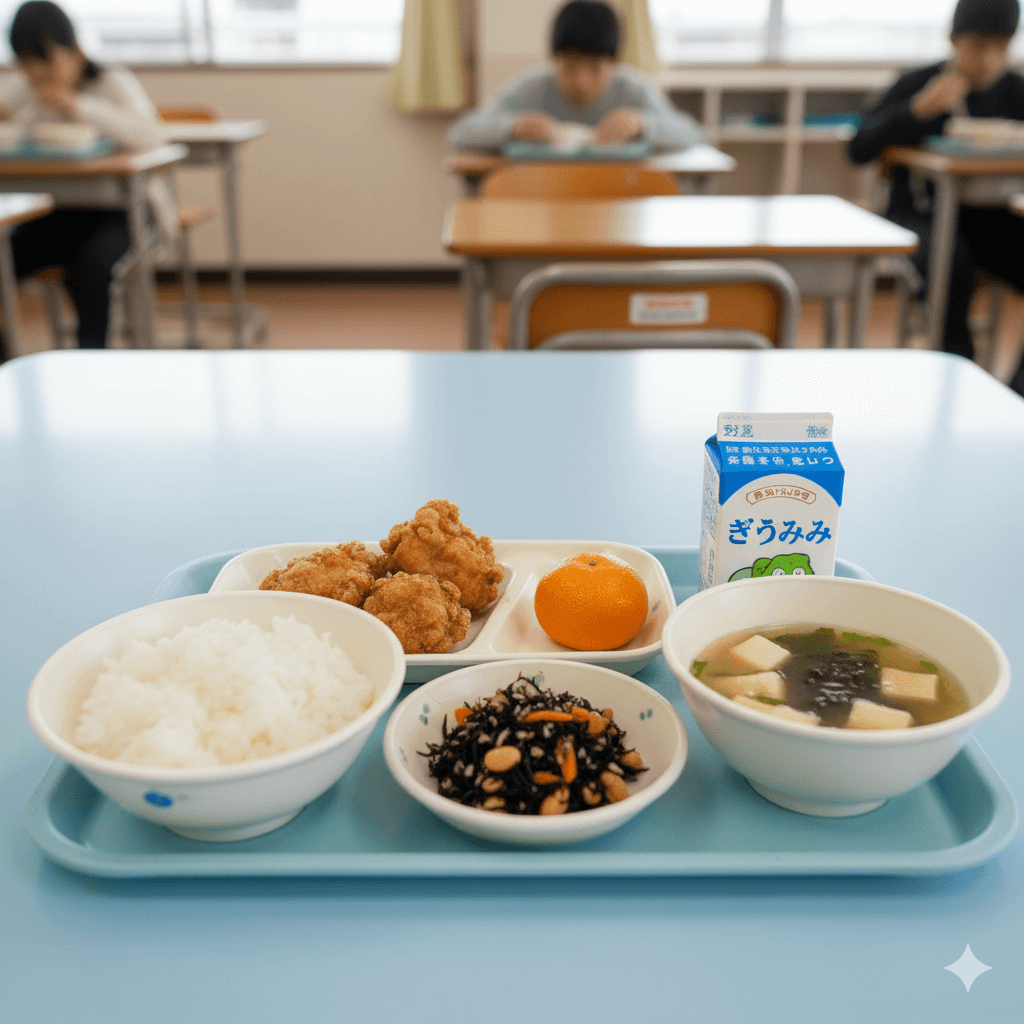In Japanese school lunches, whether it’s rice or noodles, milk is always included. Why is milk always included? Let’s take a look at its history.
The History of Japan’s School Lunch Milk
How has a single glass of milk supported the growth of children? We trace its evolution from post-war skim milk powder to the diverse options of today.
1947~ The Introductory Period: Encounter with Skim Milk Powder
Immediately after the war, Japan faced severe food shortages, and the nutritional status of children was deteriorating. To improve this situation, school lunches were resumed in 1947 with relief supplies from UNICEF and LARA (Licensed Agencies for Relief in Asia). The central ingredient was “skim milk powder.” Although many found its unique smell and taste “unpleasant,” it was a precious source of nutrition unavailable in Japan at the time, strongly supporting the lives and growth of children.
A Nutritional Savior
Skim milk powder is made by removing fat from raw milk and turning it into a powder. Its low fat content gave it a long shelf life, making it an ideal food to transport to faraway Japan. Rich in calcium and protein, school lunch staff creatively served it to children not just by dissolving it in hot water to make milk, but also by adding it to stews and soups. There is no doubt that this one cup greatly contributed to the physical improvement of post-war Japanese children.
Nutritional Comparison of School Lunch (with skim milk powder) vs. a Typical Post-War Meal (estimated)
1958~ The Transition Period: Domestic Milk and the Evolution of Containers
In the late 1950s, Japan’s dairy industry recovered and developed, enabling a stable domestic supply of milk. In response, the Ministry of Education (at the time) encouraged switching from skim milk powder to domestic fresh milk for school lunches in 1958. The arrival of milk, which was far superior in both nutritional value and flavor, was a great joy for children. This era was also a major turning point as the containers for delivering milk shifted from glass bottles to paper cartons.
Glass Bottles vs. Paper Cartons
Glass Bottles
- Advantages: Reusable, making them environmentally friendly. The coldness is directly felt, which can make the milk taste better. You can see the contents, providing a sense of security.
- Challenges: Heavy and difficult to transport. Risk of breaking if dropped. Cleaning and collection after drinking are laborious.
Paper Cartons
- Advantages: Lightweight and easy to carry. No risk of breaking, making them safe. Disposable, so they are hygienic and require less effort for collection.
- Challenges: Recyclable, but sorting requirements differ by municipality. Since they are sealed, the contents cannot be checked.
1970~ The Stable Period: A Daily Staple
Entering the 1970s, lightweight and safe paper cartons became mainstream, and a stable supply of milk was provided to school lunches nationwide. Milk was no longer something special but a daily staple essential for the healthy growth of children. However, as the era became more affluent, new challenges emerged. The role of school lunch milk began to be reconsidered, with considerations for children with allergies and the diversification of food culture.
Estimated Milk Provision Rate in Public Elementary and Junior High Schools Nationwide
Is Milk Necessary for School Lunch?
With the spread of rice-based school lunches starting in 1976, a debate arose about whether “rice and milk go well together.” In recent years, issues such as providing alternatives for children with milk allergies and food loss from leftover milk have also become important. Some municipalities have introduced days without milk or systems allowing for alternative beverages, seeking flexible responses tailored to modern children.
Towards the Future: Diversifying Choices
And now, school lunch milk is entering a new era. It is changing its form in response to societal shifts, such as addressing allergies, food diversity, and environmental considerations. All of this is for the healthy physical and mental growth of the children who will lead the future. The sentiment poured into a single glass of milk is being passed down, albeit in different forms.
Consideration for Allergies
For children with milk allergies or lactose intolerance, the introduction of alternative milks like soy milk and rice milk is being considered. Efforts are underway to create an environment where everyone can enjoy school lunch time safely.
Promoting Local Production for Local Consumption
The movement to use fresh milk produced by local dairy farmers in school lunches is spreading. It provides an important food education opportunity for children to learn about local industries and cultivate gratitude for food.
Role in Food Education
Beyond just drinking it, classes are increasing where students learn how milk is produced and what nutrients it contains. This fosters a sense of gratitude towards producers and a mindset of valuing food.
School Lunch Milk Trivia
Memories of the Tetra Pak
During the Showa era, some regions served milk in tetrahedral cartons called “Tetra Paks.” Their unique shape had the advantage of saving space during transport, but some found them difficult to drink without a straw. They are now a nostalgic memory.
Collecting Milk Bottle Caps
The paper caps on the once-mainstream glass milk bottles were typically opened with a special pick. These cardboard caps were a popular collectible for children. Playing with them like “menko” was a common sight during recess.
Flavored Milk on Special Days
Because they drank plain white milk every day, flavored milks like coffee milk or fruit milk, which appeared about once a month, were a special treat for children. On those days, the classroom was filled with a little more excitement than usual.

